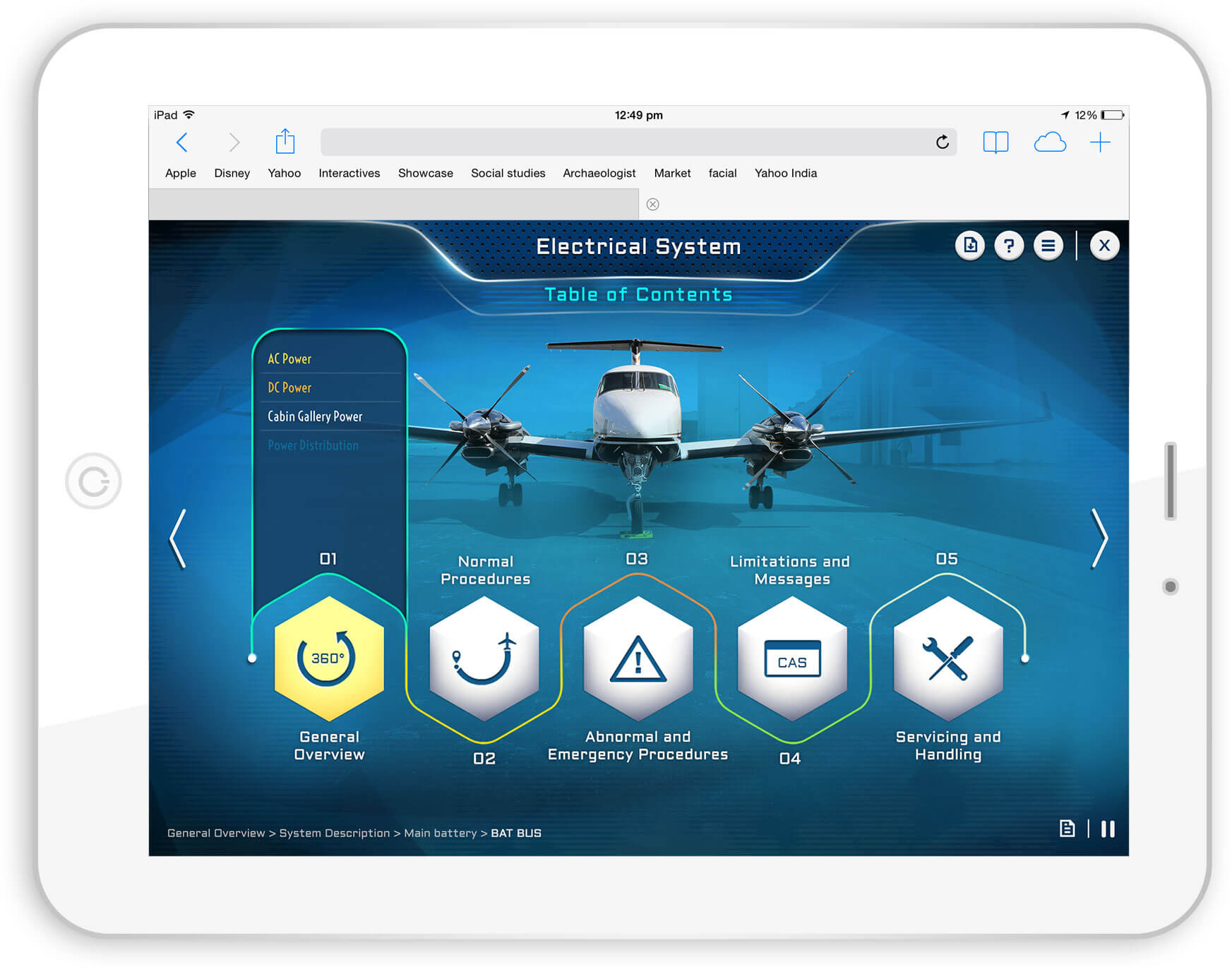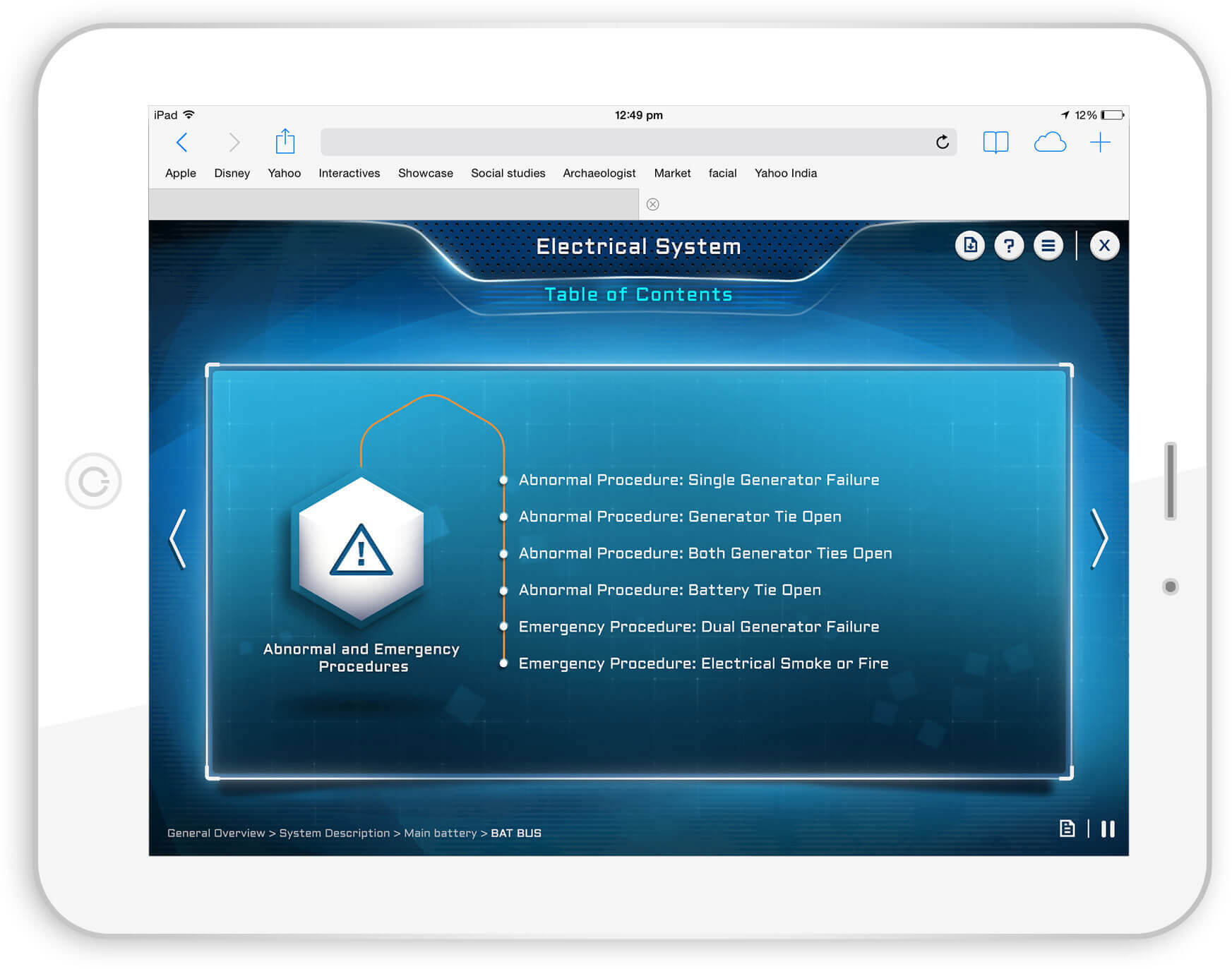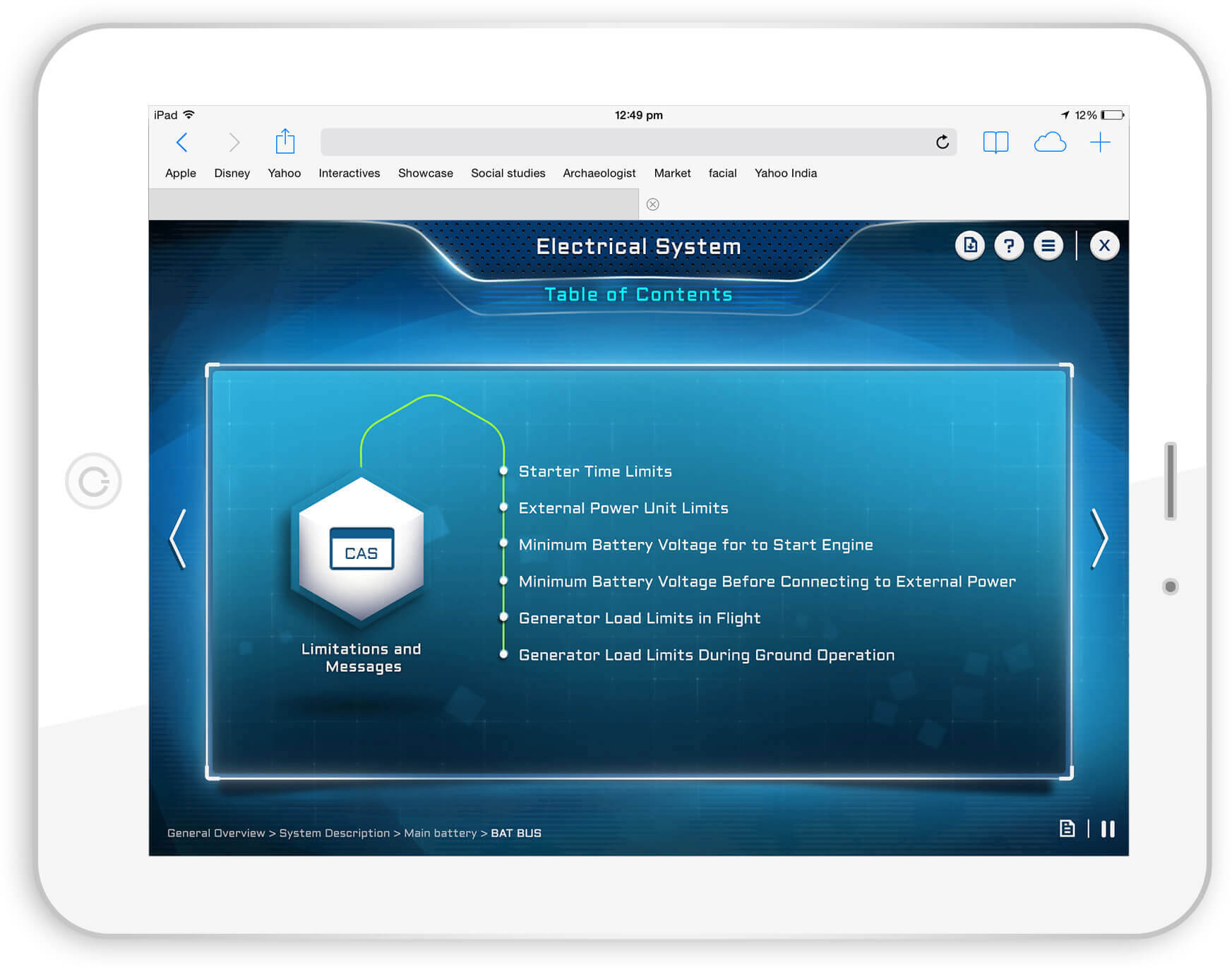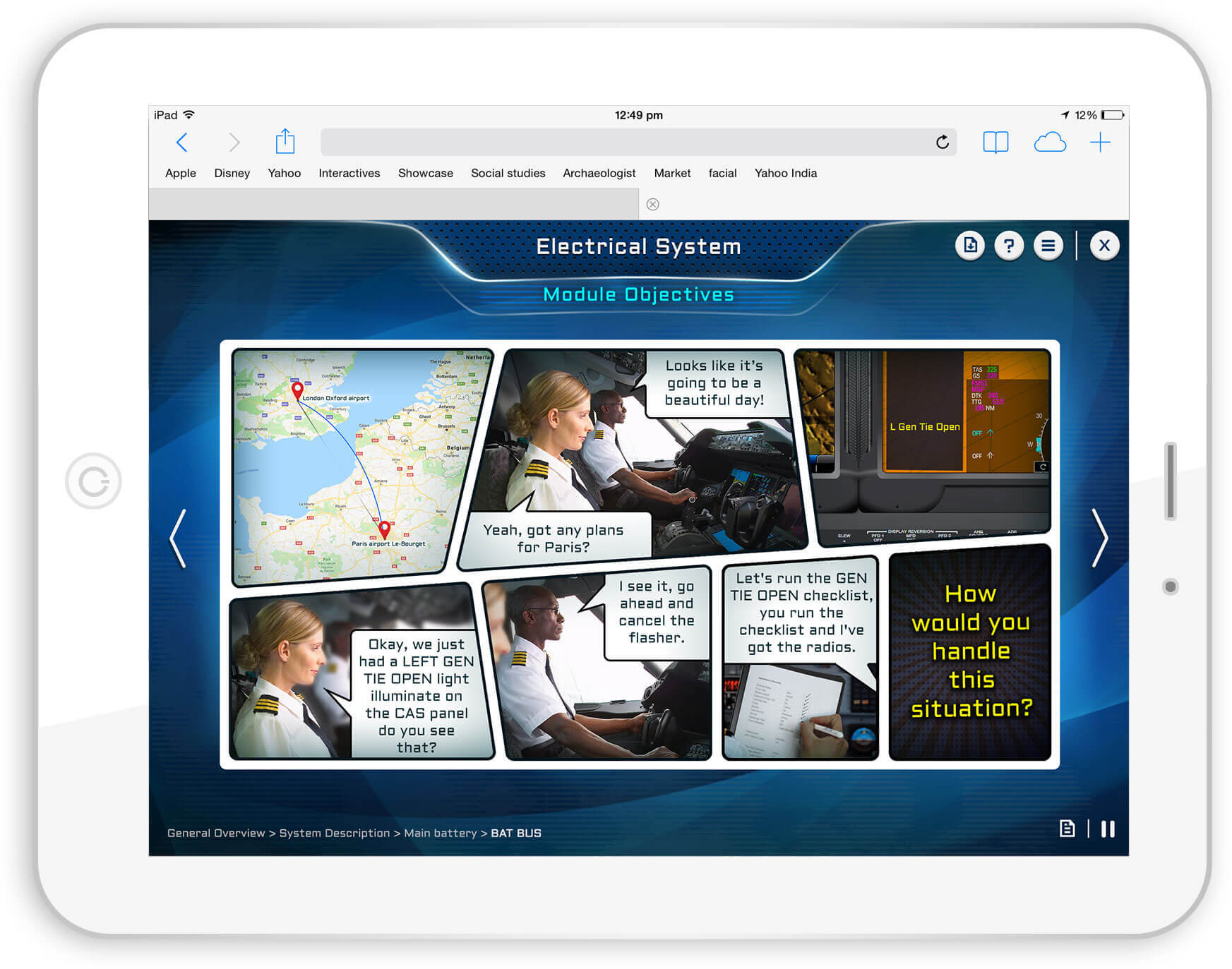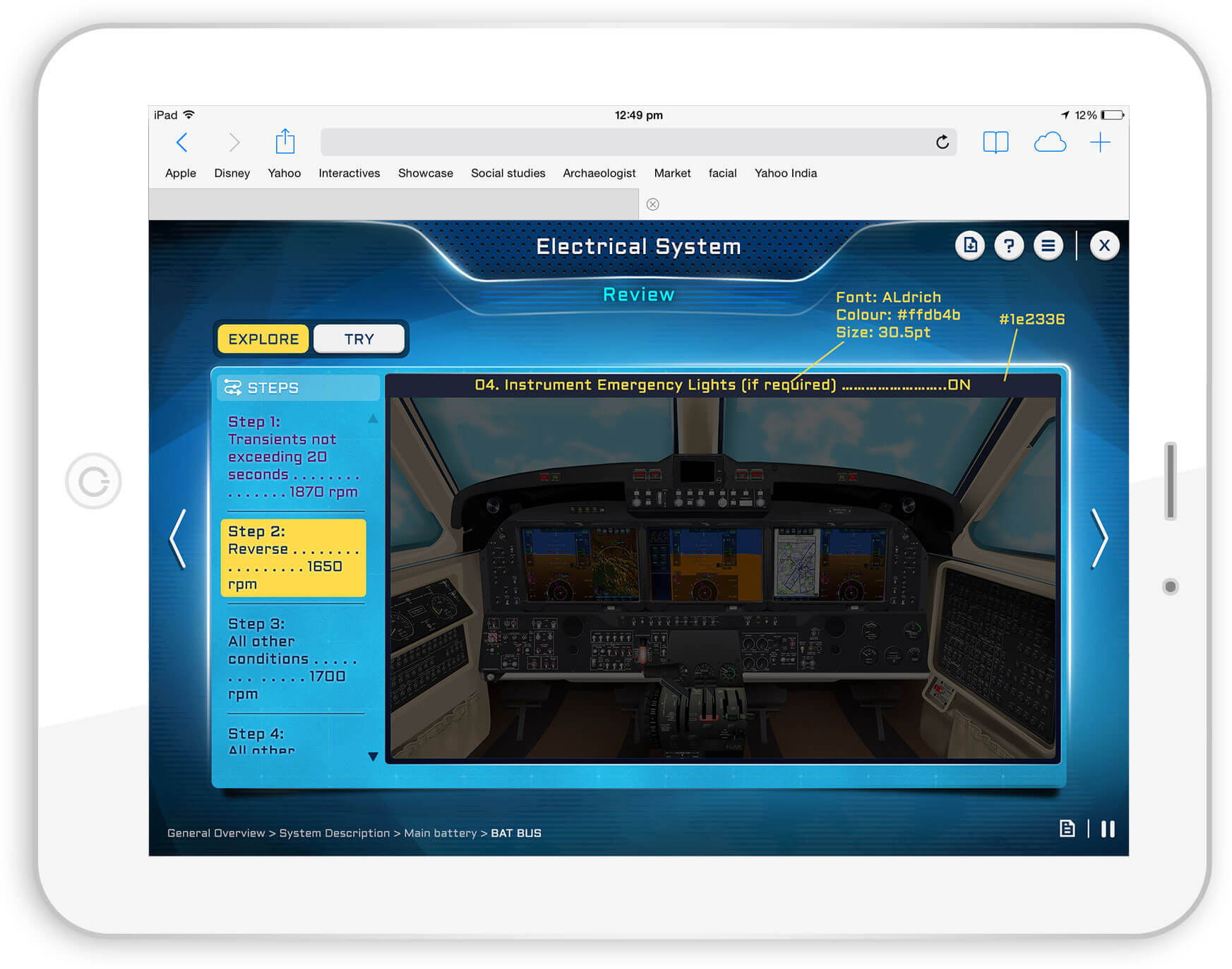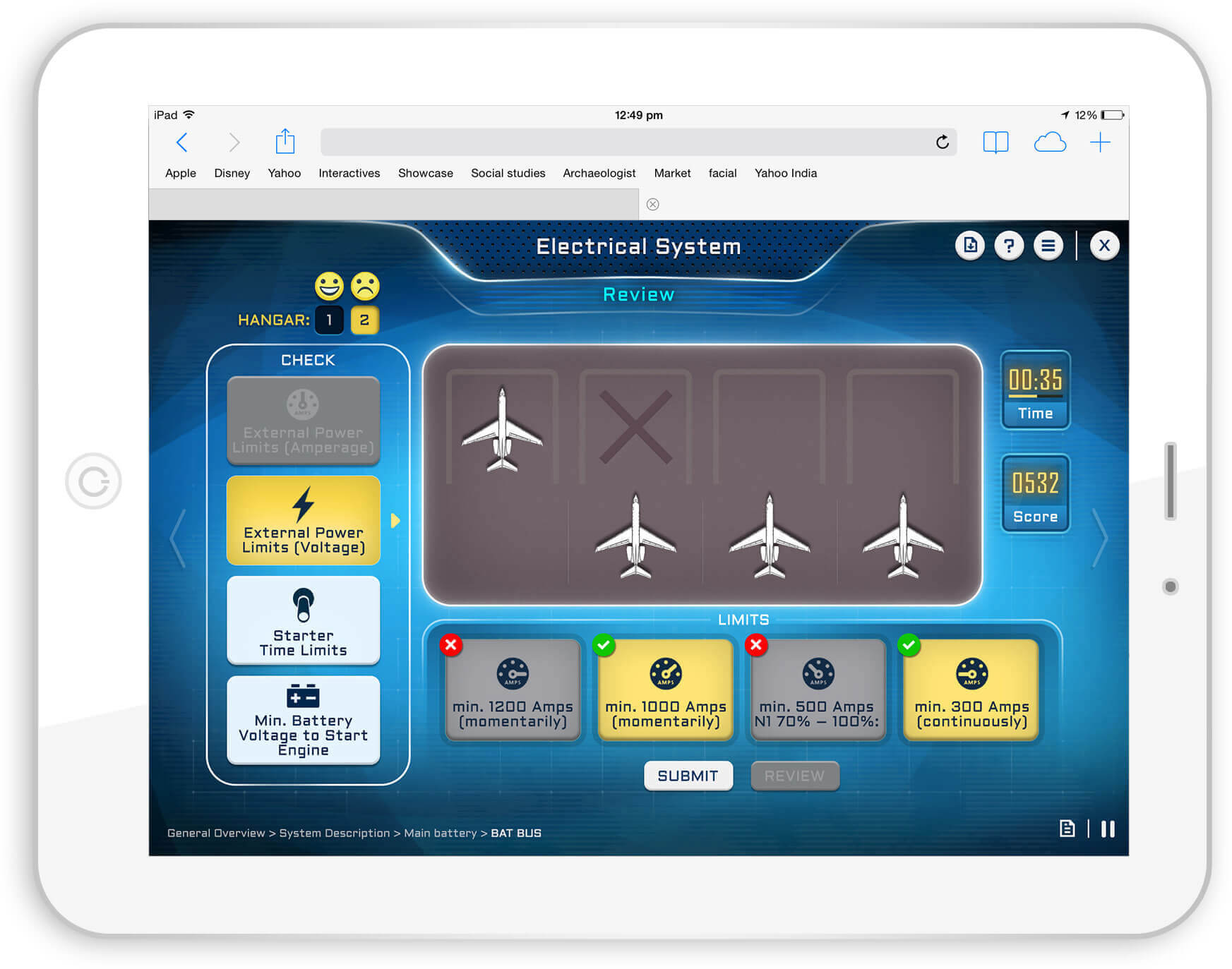Background and Business Need
A worldwide leader in training for commercial, civil, and defense aviation was looking to expand its pilot training program by including an online learning course. The company offers novice (initial) and experienced (recurrent) pilots a wide variety of advanced training programs covering different types of aircraft.
Pilots today are highly equipped on how to resolve emergencies, with rigorous and regular training to handle any abnormal or emergency situation related to the aircraft they’re flying.
KnowledgeWorks Global Ltd. (KGL) was commissioned to develop a training program targeting recurrent pilots who have flown the King Air 350i before and needed to be re-certified.
The clients had several requirements for development of the course:
- The course should provide a high-level description of the aircraft systems and normal operations, and focus on abnormal and emergency procedures, and airplane limitations
- The entire course (approximately 1000 hours of technical learning material) should be developed within a three-month timeframe
- The course should be easy to maintain and the content should be easy to edit as the FAA could introduce changes in guidelines at any time
Challenges
KGL faced two major challenges related to the nature of the content and the timeframe of development.
- For source material, the client shared the operational manual for the airplane (KingAir 350i) and existing information developed for the instructor-led training. The content was highly technical and described the different systems of the airplane; normal, abnormal, emergency, and servicing and handling procedures; and listed the limitations of each system. The challenge was to find interesting ways to review this content for a target audience that is already familiar with it.
- Without FAA approval, the client wouldn’t be able to deploy the online learning program; therefore, KGL had to meet the approval date shared by the FAA. This made the project development extremely time-sensitive. To ensure that the client met the deadline, several important decisions were made:
- Expand the team
- Use a rapid authoring tool for development
- Design custom templates that could be reused across all modules
Solution
In response to the business need and challenges, the KGL team analyzed the content, consulted multiple subject matter experts for additional guidance, and employed different strategies to deliver the content in an engaging way.
With respect to determining the learning strategy, KGL treated the nature of the content and the learners’ existing knowledge of the airplane and procedures as important factors while developing the approach for the course.
The visual design was based on the client’s requirement of a “retro look” that could appeal to old and young pilots taking the course.
Solution Highlights
To expedite module delivery, KGL chose to develop the course using Articulate Storyline 360, a commonly used course-authoring tool. Additionally, the tool provided the client with cost-effective maintainability.
The course comprised 18 modules, where each module represented one of the airplane’s systems. The operational manual and subject matter experts were consulted to ensure accuracy.
A combination of presentation templates, different interactivity templates, scenario-based presentations, and gamified activities were used to deliver the material.
For the non-critical content, a quiz-based approach was used to test for recall and comprehension of the information. For the critical content, KGL used more application-based and gamified activities to further engage learners and ensure they have more practice opportunities.
The two critical sections of the course were Abnormal and Emergency Procedures and Limitations. Per the client, recurrent pilots need to commit to memory the steps for each procedure and the details of each limitation. These were designed in an engaging and instructionally sound way to ensure that learners were adequately focused and thoroughly tested.
Important Features of the Abnormal and Emergency Procedures Section
KGL designed all the activities in the abnormal and emergency procedure section to ensure that learners could accomplish crucial tasks:
- Identify the situation immediately by seeing the indication or CAS message
- Locate the relevant panels, switches, and buttons for the procedure
- Memorize and practice each procedure enough to remember at least the first four steps (a client requirement)
The timed, gamified activities not only provided additional practice opportunities but also tested the learners’ memory of the procedure under duress. The time limits set for each activity mimicked the time a pilot would have to respond in an emergency.
Given that the learners were already familiar with the airplane and related procedures, the instructional content was presented in a direct way without too many scenarios.
- Important procedures were presented as videos and reiterated through activities
- Simpler procedures (identified by the client) were presented with short comic book style scenarios to hook learners and provide some context
Important Features of the Limitations Section
Even though flashcards have a reputation of being a dated study technique, using flashcards for the Limitations section was a purposeful choice because:
- Flashcards encourage active recall; learners are forced to think about the answer to a question rather than identifying the answer in an MCQ lineup
- They also encourage the use of learners’ metacognitive facilities, i.e., learners not only attempt to guess the answer, but also think about how well they remembered the answer, and how their answer compared to the correct one
All these factors aid a deeper understanding of the content and recall — a chief requirement from this section.
Outcomes
KGL was able to complete the development in time enabling the client to acquire the FAA approval required to deploy the course.
Apart from this, learners who took the online course followed by the instructor-led training fared better on the written assessment administered before the flight simulator test than those who only opted for the instructor-led training.
Learners’ recall of the procedures during the flight simulator test was 47% higher when compared to previous instances making the project a great success.





